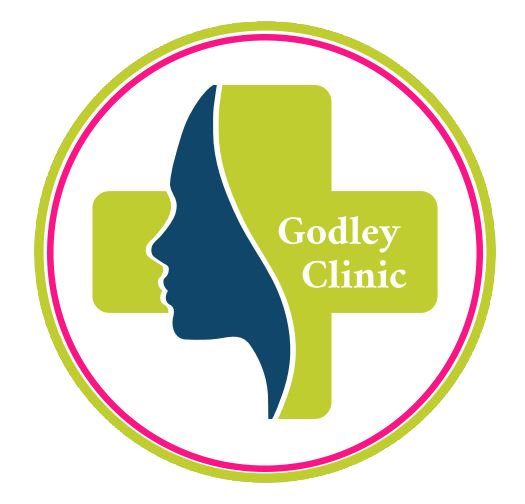What to Expect from BHRT: A Guide to Your First Year
Hormones are the body’s unsung heroes, regulating everything from energy levels to mood, metabolism, and even bone strength. As we age, hormone levels naturally decline, bringing unwelcome changes like fatigue, weight gain, and reduced libido. That’s where Bioidentical Hormone Replacement Therapy (BHRT) comes in.
BHRT helps replenish declining hormone levels with bioidentical compounds designed to work in harmony with your body. If you're experiencing symptoms related to perimenopause, menopause, or other hormonal imbalances, BHRT offers a tailored solution to help you feel more like yourself again.
This guide walks you through the first year of BHRT, highlighting four key areas where you can expect to see improvements: stress, bone health, libido, and weight management. Understanding what to expect can help you stay motivated and committed to the process.
1. Stress Management: Finding Your Calm
If you’ve been feeling constantly overwhelmed or anxious, it may not just be life’s demands — it could be your hormones. When levels of estrogen, progesterone, testosterone, and cortisol become imbalanced, stress and anxiety can increase. Sleep disturbances, mood swings, and irritability often follow, making everyday tasks feel harder than they should be.
With BHRT, many patients notice a gradual improvement in mood and stress levels within the first three to six months. As your hormones stabilize, you may feel a sense of calm returning.
Supporting Evidence:
Estrogen and progesterone influence neurotransmitters like serotonin and dopamine, which regulate mood.
Studies suggest that BHRT can reduce symptoms of depression and anxiety, particularly in perimenopausal and menopausal individuals.
How to Maximize Your Results:
Pair BHRT with mindfulness practices like meditation and deep breathing.
Maintain a balanced diet rich in whole foods, healthy fats, and proteins.
Engage in regular physical activity to reduce stress and enhance mood naturally.
2. Bone Health: Strengthening from Within
Our bones might feel solid, but they’re constantly regenerating. Hormones, especially estrogen, play a crucial role in maintaining bone density. As estrogen declines, bones can become more fragile, increasing the risk of fractures and osteoporosis.
BHRT helps slow down bone loss and even improves bone density over time. While you may not feel this change happening, studies suggest that improvements can begin within six to twelve months of consistent treatment.
Supporting Evidence:
Estrogen replacement therapy has been shown to reduce the risk of osteoporosis in postmenopausal women.
Supporting Stronger Bones:
Supplement with calcium and vitamin D to aid bone regeneration.
Engage in weight-bearing exercises like walking, yoga, or strength training.
Stay hydrated and minimize excessive caffeine or alcohol intake, which can weaken bones over time.
3. Libido: Reigniting Intimacy
A drop in libido is a common yet often unspoken consequence of hormonal imbalances. Whether it’s due to menopause, low testosterone, or other factors, the good news is that BHRT can help. By replenishing estrogen, progesterone, and testosterone levels, BHRT restores natural lubrication, sensitivity, and overall sexual well-being.
Many patients report improvements in libido and intimacy within three to six months of starting treatment. However, the emotional side of intimacy is just as important as the physical.
Supporting Evidence:
Several randomized studies have shown that compounded testosterone treatment improved libido and increased sexual activity in menopausal women who had previously reported diminished sexual desire or satisfaction.
Enhancing Sexual Wellness:
Open communication with your partner can help strengthen emotional and physical connection.
Lifestyle changes, such as stress reduction and regular exercise, can further boost libido.
Consider additional therapies like pelvic floor exercises or regenerative treatments for enhanced benefits.
4. Weight Management: Aiding Your Metabolism
If you’ve been struggling to maintain or lose weight despite eating well and exercising, hormones may be the culprit. Estrogen, testosterone, and thyroid hormones play essential roles in regulating metabolism. When they decline, fat storage increases, particularly around the abdomen.
BHRT can help optimize metabolism and improve energy levels, making it easier to achieve and maintain a healthy weight. While results vary, many patients start seeing changes in body composition within three to nine months.
Supporting Evidence:
Some research suggests that hormone therapy may help reduce visceral fat, but results depend on diet, exercise, and other factors.
Supporting Your Weight Goals:
Adopt a diet rich in protein, fiber, and healthy fats while limiting processed foods.
Stay active with both strength training and cardiovascular exercises.
Ensure you get quality sleep, as poor sleep affects weight regulation.
Book your Hormone Health Consultation in Vancouver or Abbotsford
Starting BHRT is not just about addressing symptoms — it’s about reclaiming vitality and enhancing overall well-being. Results take time, and patience is key. Regular follow-ups with your provider ensure that your treatment plan stays aligned with your body’s needs.
BHRT is just one piece of the puzzle in a holistic approach to health. By pairing it with good nutrition, exercise, and stress management, you’re setting yourself up for long-term success.
Dr. Mark Godley’s Longevity Program at Godley Clinic takes a forward-thinking approach to aging. Combining regenerative medicine, tailored hormone therapy, and proven wellness strategies, this program is built to help you stay strong, energetic, and vibrant as you age. If you're curious about how BHRT fits into a broader plan for long-term health, book a consultation to learn more.
References:
Cleveland Clinic: Bioidentical Hormones
BMC Women's Health: Associations between menopausal hormone therapy and sleep disturbance
National Center for Biotechnology Information: Effects of Hormone Therapy on Cognition and Mood in Recently Postmenopausal Women
National Library of Medicine: Testosterone Therapy and Libido



